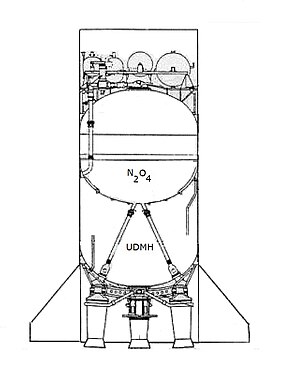
The Europa rocket was an early expendable launch system of the European Launcher Development Organisation (ELDO),which was the precursor to the European Space Agency (ESA). It was developed with the aim to delivering space access technology,and more specifically to facilitate the deployment of European-wide telecommunication and meteorological satellites into orbit.

The Scout family of rockets were American launch vehicles designed to place small satellites into orbit around the Earth. The Scout multistage rocket was the first orbital launch vehicle to be entirely composed of solid fuel stages. It was also the only vehicle of that type until the successful launch of the Japanese Lambda 4S in 1970.

Bélier is the designation of a French sounding rocket family. Three versions of the Bélier were launched between 1961 and 1970 at the CIEES launch facility at Hammaguir,the Salto di Quirra and Ile du Levant missile ranges,and Kourou Space Center.

VE 231 Saphir was a French two stage sounding rocket.

The Dragon is a two-stage French solid propellant sounding rocket used for high altitude research between 1962 and 1973. It belonged thereby to a family of solid-propellant rockets derived from the Bélier,including the Centaure,the Dauphin and the Éridan.
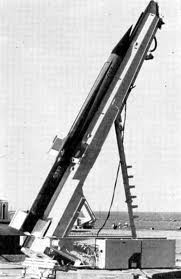
Centaure was a two-stage French sounding rocket consisting of a Venus first stage and a Belier second stage. It belongs to a family of solid-propellant rockets consisting of the Belier,Centaure,Dragon,Dauphin,and Eridan.
Astrobee is the designation of series of American sounding rockets with one to three stages.
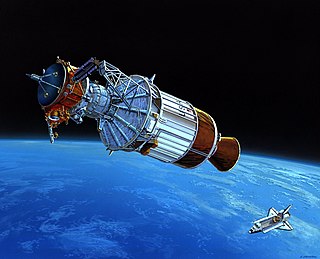
The Inertial Upper Stage (IUS),originally designated the Interim Upper Stage,was a two-stage,solid-fueled space launch system developed by Boeing for the United States Air Force beginning in 1976 for raising payloads from low Earth orbit to higher orbits or interplanetary trajectories following launch aboard a Titan 34D or Titan IV rocket as its upper stage,or from the payload bay of the Space Shuttle as a space tug.
RD-270 (Russian:Раке́тныйдви́гатель270,Rocket Engine 270,8D420) was a single-chamber liquid-bipropellant rocket engine designed by Energomash (USSR) in 1960–1970. It was to be used on the first stages of proposed heavy-lift UR-700 and UR-900 rocket families,as well as on the N1. It has the highest thrust among single-chamber engines of the USSR,640 metric tons at the surface of Earth. The propellants used are unsymmetrical dimethylhydrazine (UDMH) and nitrogen tetroxide (N2O4). The chamber pressure was among the highest considered,being about 26 MPa. This was achieved by applying full-flow staged combustion cycle for all the incoming mass of fuel,which is turned into a gas and passes through multiple turbines before being burned in the combustion chamber. This allowed the engine to achieve a specific impulse of 301 s (2.95 km/s) at the Earth's surface.

This comparison of orbital launch systems lists the attributes of all individual rocket configurations designed to reach orbit. A first list contains rockets that are operational or in development as of 2023;a second list includes all upcoming rockets and a third list includes all retired rockets. For the simple list of all conventional launcher families,see:Comparison of orbital launchers families. For the list of predominantly solid-fueled orbital launch systems,see:Comparison of solid-fueled orbital launch systems.
The Keldysh bomber was a Soviet design for a rocket-powered sub-orbital bomber spaceplane,which drew heavily upon work carried out by Eugen Sänger and Irene Bredt for the German Silbervogel project.
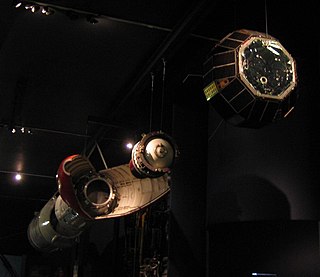
Waxwing was a British solid rocket motor used for apogee kick as the 3rd (upper) stage of the Black Arrow satellite launch vehicles. It was also known as Black Arrow-3. Waxwing was used to successfully place the Prospero X-3 satellite into low Earth orbit on 28 October 1971,Britain's only satellite launched on an indigenously developed launch vehicle. Before being separated from the Black Arrow launch vehicle,it would be spun on a turntable using six radial 'Imp' solid rocket motors to spin stabilise the satellite. This means that any discrepancy in thrust in any direction would be cancelled out. The Waxwing motor is now out of production.
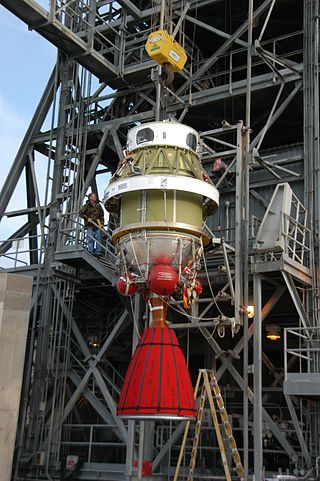
The AJ10 is a hypergolic rocket engine manufactured by Aerojet Rocketdyne. It has been used to propel the upper stages of several launch vehicles,including the Delta II and Titan III. Variants were and are used as the service propulsion engine for the Apollo command and service module,in the Space Shuttle Orbital Maneuvering System,and on the European Service Module –part of NASA's Orion spacecraft.
The SM-68 Titan was the designation of two intercontinental ballistic missiles developed for the United States Air Force. The Titan I and Titan II missiles were operational between 1962 and 1987 during the Cold War. These missiles,particularly the Titan II,were the basis of the Titan family of space launch vehicles.
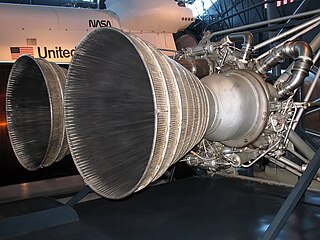
The LR87 was an American liquid-propellant rocket engine used on the first stages of Titan intercontinental ballistic missiles and launch vehicles. Composed of twin motors with separate combustion chambers and turbopump machinery,it is considered a single unit and was never flown as a single combustion chamber engine or designed for this. The LR87 first flew in 1959.
Tronador is a series of Argentine rockets,including the Tronador I and Tronador II vehicles,to develop a liquid-propellant rocket expendable launch system called ISCUL.

The Astris was an upper stage developed by ERNO Raumfahrttechnik GmbH and MBB as the third stage of the Europa 1 launch vehicle. It was the German contribution to the project and only flew activated four times. The high failure rate of the three and four stage rocket meant that the project was cancelled.
The BT-4 is a pressure-fed liquid rocket engine designed and manufactured by IHI Aerospace of Japan. It was originally developed for the LUNAR-A project,but it has been used as a liquid apogee engine in some geostationary communications satellite based on the Lockheed Martin A2100 and GEOStar-2 satellite buses. It has also been used on the HTV and Cygnus automated cargo spacecraft.
Nike Yardbird was an American sounding rocket with two stages,based upon the Nike Hercules M5E1 booster and a Thiokol TE-289 Yardbird upper stage. Yardbird was an improved Thiokol XM-19 motor. The Nike Yardbird was launched 2 times from Wallops Island on Sphere Test aeronomy missions both of which were classified as failures. Information available does not state the reason for the mission failures but Astronautix lists the apogee of both missions as 10 km (6 mi) which is well below the goal of 120 km (70 mi).

LEX was a French experimental hybrid-propellant sounding rocket,developed by ONERA. It had the objective of testing a lithergol fueled rocket engine. It was the first rocket in history to use this technology,flying 8 times between 1964 and 1967.


